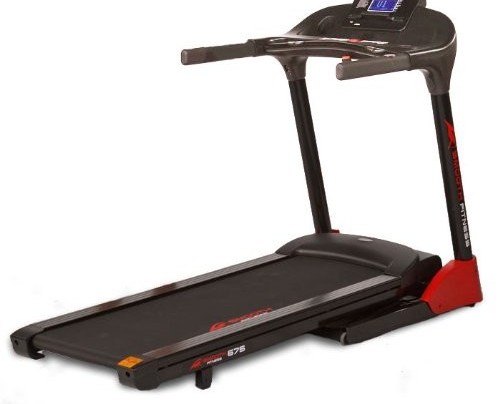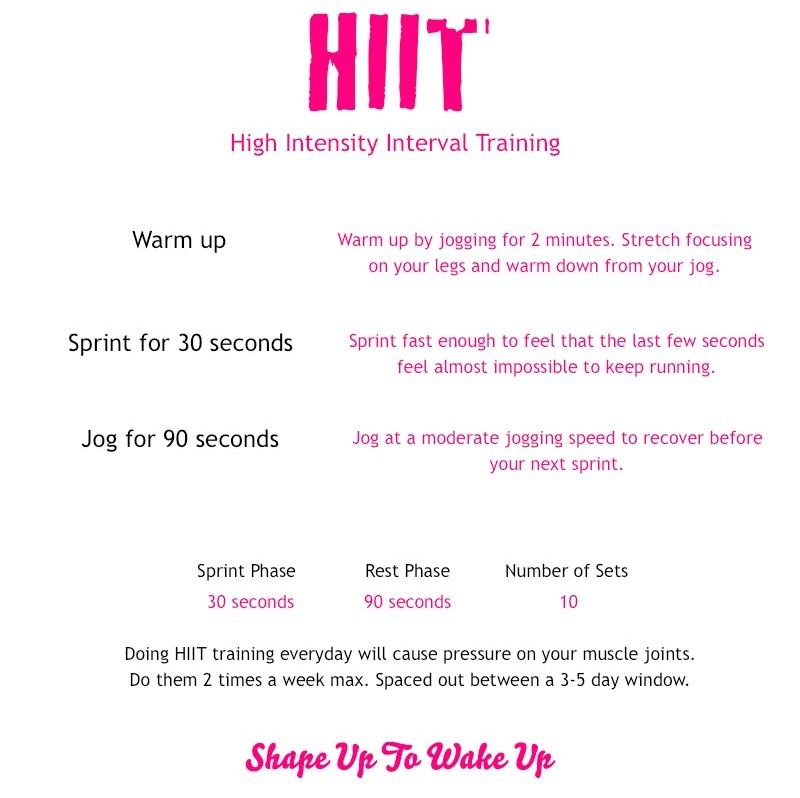WHAT IS HIIT?
It is not for everyone. HIIT is a cardiovascular training strategy that alternates intense bursts of exercise with relatively moderate forms until exhaustion is reached.
An example may be sprinting for 5 minutes, followed by jogging or fast walking for another 5 minutes. Then continuing this until you are too tired to go further. There are no time constraints, but generally HIIT training lasts for 20- 30 minutes.
Intensity will vary with one’s physical condition, as will total time and interval time. It is not a complicated concept, but we must be aware of our endurance and strength levels.

This follows and builds upon my previous post, “Quick Home Workout Routines”. HIIT has become quite popular among serious proponents for these reasons:
- It is great for fat loss
- It takes relatively very little time
- It may not require any special equipment
See my prior article on “Couch Potato Workout Programs” for information for absolute beginners. Of particular importance when considering an intense form of exercise is a doctor’s examination.
If your doctor has approved of high intensity training and you are ready to go, you still need a warm – up before beginning. In my example of running / jogging (or fast walking), this should be preceded by a period of walking first. Walking and swinging the arms would work well as a warm – up.
DOING THIS AT HOME
Personally, I use my treadmill when I do HIIT at home. I set the miles per hour at 2 to begin, This is for 5 minutes. Then I go to 4 mph for the next 5 minutes, which is very fast walking. Next, back to 2 mph, followed by 5 mph, which is fast jogging. Then I continue as long as I can.
See my treadmill below, with a link to the same brand, as updated since my purchase.

Here is the link. This is Amazon. While you are there, check other cardio machines – stationary bikes, rowing machines, stair steppers, elliptical machines and the like. As an Amazon associate, I may earn from qualifying purchases.
Other good options for HIIT at home would include these:
- Jumping jacks for 5 minutes, followed by walking in place
- Jumping rope, followed by 30 second planks
- Shoveling snow for 20 minutes, followed by total rest. I did this last winter. The snow banks had turned to ice. I lasted for 20 minutes at a time, then collapsed for another 20 minutes, then shoveled for 20 minutes and on and on. This was not intended to be a workout, but the effect was that of a workout on steroids.
Check out the routine below. This is more appropriate for your neighborhood, as opposed to your living room.
HIIT WITH RESISTANCE
Using weights or other forms of resistance within an HIIT program makes a lot of sense for these reasons:
- Applying HIIT to resistance exercise, with light weights and high repetitions, becomes an excellent cardio routine
- Weight training has definite advantages over aerobic exercise in fat loss terms
- See the report on weight training for seniors by Wake Forest University
With dumbbells, it would be easy to construct an HIIT program. For example:
- Lie on a bench, with two light dumbbells. Press upward for 25 reps.
- Then repeat bench press with dumbbells that allow only 6 -8 reps. Then rest
- Perform bent over row with light weight for 25 reps
- Then repeat with weights that allow 6 – 8 reps. Then rest
Continue in this mode with triceps extensions, curls, squats, lateral raises or other movements that you may choose. Perform the lighter and heavier form of each as quickly as you find comfortable for about 6 exercises or 12 total sets.
The resistance training will boost your metabolism and allow for calorie expenditure while at rest, especially when combined with high repetitions. Whole body fat oxidation has been clearly established with HIIT workouts, whether using resistance or not. An added benefit of using resistance is the muscle building or toning that improves our physiques.
How do we know when we are effectively using HIIT training? Measuring our heart beat is one way, but the simplest way for me is to take note of my perspiration, which does not suggest doing a workout in a heated environment. “Sweat is magic” is a motivational mantra that I see often.
Where can you find dumbbells? Here are a few options:
Adjustable, up to 20 lbs. each
Pairs of 5, 10, 15, 20, and 25 lbs. Rack is included.
The same HIIT resistance routine can be established with the use of resistance cords or Bullworker products, both of which I use constantly. Please remember: there is nothing mysterious about HIIT resistance training. It is simply the combining of exercises that are commonly done, in such a manner that intensity predominates. Heavier weights are used and alternated with lighter weights.
Here is an option for resistance cords
And here is the Bullworker site (Use code hat5 for a 5% discount on any Bullworker purchases)
CONCLUDING
High Intensity Interval Training has been used since the 1970’s, though adapting it to weighted resistance exercise has only been popularized in recent times. The concept of briefer but more intense workouts now seems to be generally and globally recognized.
To summarize your HIIT options and some examples, you may:
- Go outdoors and alternate sprints with slow jogging
- Outdoors or indoors, alternate jumping jacks with walking in place
- Use bodyweight resistance indoors, push – ups / brief planks
- Use dumbbells and alternate high reps / lighter weight with fewer reps / heavier weight
- Use resistance cords or Bullworker products in a similar manner
You are not limited to the above suggestions. You may combine cardio with resistance movements, biceps with triceps, push – ups with dumbbell curls, resistance cords with Bullworkers. You may combine isotonic movements with isometrics. You may perform an exhausting set of any kind and then rest for a few minutes before repeating that same set.
The only requirement for this workout strategy is that you work hard and then let up before you work hard again. Expend energy fully and then recover, then repeat. Less time is needed, but this does not suggest an easier workout.
It is worthwhile to consider breaking in to HIIT slowly if you are not in great shape. This means to moderate your intensity until it begins to feel comfortable. Common sense prevails.
Please leave any comments or questions in the “Comments” box below. Or e-mail me, richard@myworkoutathome.com.
Be well!
